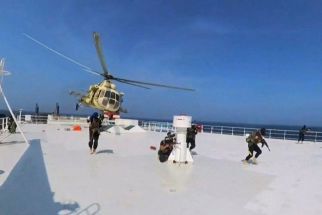Yearender: A challenging year for crisis-hit DOT
MANILA, Philippines – 2010 was certainly a challenging year for the Department of Tourism (DOT) and the local tourism industry, as one crisis followed after another.
Barely a month after assuming leadership of the DOT, Tourism Secretary Alberto Lim was confronted with the killing of eight tourists from Hong Kong and the hostage-taker after a dismissed police officer commandeered a tourist bus that led to a bungled police rescue operation last Aug. 23 at the Rizal Park in Manila.
Tour cancellations and a travel ban for Hong Kong tourists, one of the country’s top 10 tourist markets, immediately followed the hostage crisis, prompting the DOT and the private sector to prepare contingency plans to cushion the negative impact of the Aug. 23 hostage incident.
Lim admitted that the hostage-taking incident initially resulted in a decline in tourist arrivals, particularly Hong Kong travelers.
He said the tourism industry, however, was able to recover faster than expected.
A few weeks prior to the Rizal Park carnage, the DOT also faced the threat of a strike by workers of Philippine Airlines (PAL), the country’s flag carrier.
PAL’s ground crew employees, as well as flight attendants, separately filed notices to strike to protest the mass retrenchment and downgrading of workers’ rights.
PAL pilots, who were hired by high-paying foreign airlines, also resigned en masse, causing delays in the airline’s flights during the middle of this year, while just before the end of the year another controversy at the Ninoy Aquino International Airport (NAIA) broke out.
Lim feared that, if not resolved quickly, an ongoing problem between foreign airlines and the Bureau of Customs (BOC) regarding overtime pay might adversely affect foreign arrivals.
Lim said the BOC promised, beginning next year, to assign personnel by shifts so they could provide 24-hour service at the airports without forcing airlines to pay them overtime.
Foreign airlines are protesting their having to pay overtime and insist that BOC should be rendering 24-hour service. BOC personnel, however, have said they should only be working for eight hours or until 5 p.m.
Travel advisories, slogan controversy
The United States and several other European countries issued travel advisories for their citizens traveling to the Philippines last November due to alleged terror threats.
One foreign country even warned its citizens about traveling to the Philippines during the Christmas season when crime is rampant.
Lim said that despite the travel advisories issued by foreign governments, travel agencies have not witnessed tour cancellations, although he assured the traveling public that the DOT is closely working with the Philippine National Police (PNP) to strengthen existing measures for the protection of local and foreign tourists.
In another effort to promote local tourist attractions, the DOT spent P4 million to create a new tourism program named “Pilipinas Kay Ganda.”
Lim said the new tourism campaign focused on the beauty of the country and reflected the hope and optimism of the new Aquino administration.
The new slogan, however, drew criticism from the tourism industry and other sectors that claimed that it was plagiarized and amateurish.
Tourism Undersecretary Vicente Romano, the man behind the controversial slogan, eventually took responsibility for the fiasco and resigned.
Tourist arrivals
Despite the many crises that came their way, DOT’s Tourism Development Planning director, Rolando Canizal, still maintained that 2010 was a year of growth for the tourism industry.
“Although there were stumbling blocks, the tourism industry still managed to grow, so we look at it as a good year with the department also able to implement new programs, slowly but surely,” Canizal said.
Based on DOT data, the country welcomed 2,845,573 international arrivals from January to October this year. The figure was 15.85 percent higher than last year.
Further, Canizal said South Koreans remained as the country’s largest group of tourists, as Koreans are expected to exceed 600,000 by the end of the year.
“There was a slump in the number of Korean tourists a year ago due to the economic slump, but this year they posted significant growth,” Canizal pointed out.
He also noted that this year the DOT posted $1.74 billion in tourism earnings, the largest amount ever recorded, and mainly attributed to the increased number of arrivals.
Accomplishments
For the past six months, the new DOT leadership began various initiatives to address industry concerns and improve tourism products.
Canizal said the new projects include the liberalization of the airline industry, as well as a proposed executive order to eliminate customs, immigration and quarantine fees.
The DOT also proposed legislation to Congress to amend existing rules on taxes paid by air carriers, as well as amendments on visa rules for tourists arriving from China and India.
The DOT also put in place the National Tourist-Oriented Police for Community Order and Protection (TOP COP) program.
Under the TOP COP program, Lim said, the PNP would create a special team of trained tourist-oriented police officers and deploy them in priority tourist areas to provide security and police assistance to travelers.
Canizal also expressed confidence that in the coming year the DOT would be able to fully implement the National Tourism Policy Act of 2009, which aims to solidify the status of the tourism industry as an engine of growth and development.
Further, he said, Secretary Lim is working on the appointment of officials to new DOT attached agencies, as provided under the Act.
The programs implemented, and those to be enforced in 2011, are part of the reason the Federation of Tourism Industries of the Philippines expressed hope that the tourism industry could easily double tourist arrivals in the coming years.
- Latest
- Trending





























